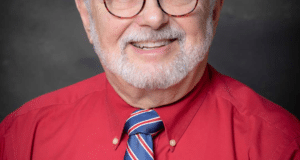By Mark Benedetti | Staff Writer
Wednesday night, in Bazarsky hall, four experts led a panel discussion on bringing food to New England via reviving the region’s once-prosperous agricultural industry. Citing environmental concerns, food security, and economic troubles as an issue, they explored how local farms could potentially aid in the solution to these problems.
The panel was hosted by the Pell Center, who moderated the discussion, titled “Farm to Table: Farming, Food Production, and Their Consequences”. It began with the question, “what is a food system?” An infographic showed that the answer to this simple question is actually far more complex than one normally thinks. Aside from the obvious farmer, consumer, transport, and grocer, one must also consider the policy makers, the businesses, the petroleum industry, water, equipment, education, suppliers, the list continues. The effects of this web included public health, global climate, communities, the economy, and the environment.
Panelists included Charles Allot, the executive director of the Aquidneck Land Trust (dedicated to preserving Aquidneck Island’s undeveloped land); Courtney Bourns, a senior program officer at the Henry P. Kendall Foundation (chosen because of the foundation’s program focused on building a resilient food system in New England); Salve’s own Jameson Chace, director of SRU’s Environmental Studies program; and Chuck Wooster, a Vermont farmer who produces a variety of items for local families on his farm as well as an accomplished environmental writer.
The need for local farming is intense. Large amounts of farms are being developed into box stores and condos. Large, agribusinesses is one of the biggest polluters and energy consumers. Our regional economy is struggling. Climate change is giving us fiercer droughts, blizzards, and hurricanes. Our produce is becoming less nutritious. Utilizing local farms isn’t the solution, but it is part of it.
Dr. Chace believed that we should confront the issues with the 3 P’s: People, Policy, and Paradigm. We need to remember the people that are involved in the web, not only the farmers but also the consumers and communities who would be taking part in both ends of that relationship. Our laws need to allow such a relationship to exist and take the public favor away from large farms and into smaller farms. This model has to be a multi-faceted approach that looks at how it can best benefit that most people. Chace was sure to point out that hydroponics could help, as it grows plants inside which could benefit urban areas immensely. Salve has a hydroponic lab underneath Hunt Hall, operated mostly by students with Dr. Chace as a faculty supervisor.
The Kendall Foundation has a project that Bourns is the head of, 50 by 60. The goal is to have 50% of New England’s food be grown within the region by the year 2060. The plan includes allowing for a livable wage, more farm to plate programs in schools and hospitals’, ensuring any household is able to grow its own food as it chooses, among other programs regarding public education and investing in the land. Important parts of the program include eradicating hunger and keeping about 70% of New England forested. It also made way for commercial fishing as a regional concern, since “fish don’t know state boundaries,” as Bourns put it.
Wooster’s farm is situated in picturesque White River Junction. The property is from the days of British Rule, however, it is currently run in a very modern way. It utilizes compost from their fields, chicken, and sheep, is organic, uses cover cropping methods of planting, hoop houses to increase the growing season, provides maple syrup in typical Vermont fashion, and provides saw logs and biomass from the forest, which covers most of the property. The idea is to increase the amount of food you can grow on small farms, giving them the edge to compete with larger farms.
Sunrise Farm is set up as a CSA farm. CSA stands for Community Supported Agriculture. Essentially this means that people can “join” the farm at the start of the season, and then they are able to receive the harvest throughout the year. This allows CSA farmers to prepare their crops exactly to their customers’ demands, at a 30% savings to the customer. Farmers receive 70% of the food dollar, which according to Sunrise Farm’s website, is seven times that of a wholesale farmer. Currently, Wooster provides for 150 families through Sunrise Farm alone.
According to Bourns and Chace, New England only produces about 7-12% of its own food, with Rhode Island (who has the largest food security problem in New England) only producing 1-2% of its own consumption. The panel did define food security not as a person’s access to food as a whole but rather a person’s access to nutritious food. This means underprivileged groups are typically more prone to disease, are more obese, their children cannot focus as well in school, as well as the other issues regarding living in poverty.
Typically, local, organic, nutritious food is reserved for those able to purchase it. The panel made it a point to say that they believe this shouldn’t be so. “Food vision won’t just be for the elite” Bourns remarked during her presentation. The current scale of local farming usually reserves it for the few, however, with the plans that the panel described, they believed that it could turn the other way once programs got off the ground. Currently, SNAP benefits could help that as they are usually accepted at most farmers’ markets. The panelists did suggest that farm subsidies should be switched from large farms over to smaller ones. “We need to create a marketplace for local food,” said Allot, as the key way to link the farms to the people.
When asked by the writer how college students can best get involved, the panelists had this to say. “Get involved with community gardens, such as the ones at St. Mary’s or the Methodist Church,” from Allot. The Aquidneck Land Trust has programs supporting community gardens on the Island, and let’s not forget that the Methodist Church donates its food to families in need, free of charge. Bourns told me that students should organize a Real Food Challenge on campus, which is an online program to boost local foods used as ingredients in college dining halls. Chace had similar thoughts, saying that food services does a real good job providing seasonal food to students however students can certainly ask for more, since the school really caters to the demands of the student body. Chuck Wooster said even occasionally buying from a farmer’s market would help, even once a month. This way it connects students to the community they’re in while still experiencing what there is at farmers’ markets.
When asked why local food is so important, the panelists would first answer “because it tastes better,” before diving into the deeper reasons. Of course, what more could you need?














